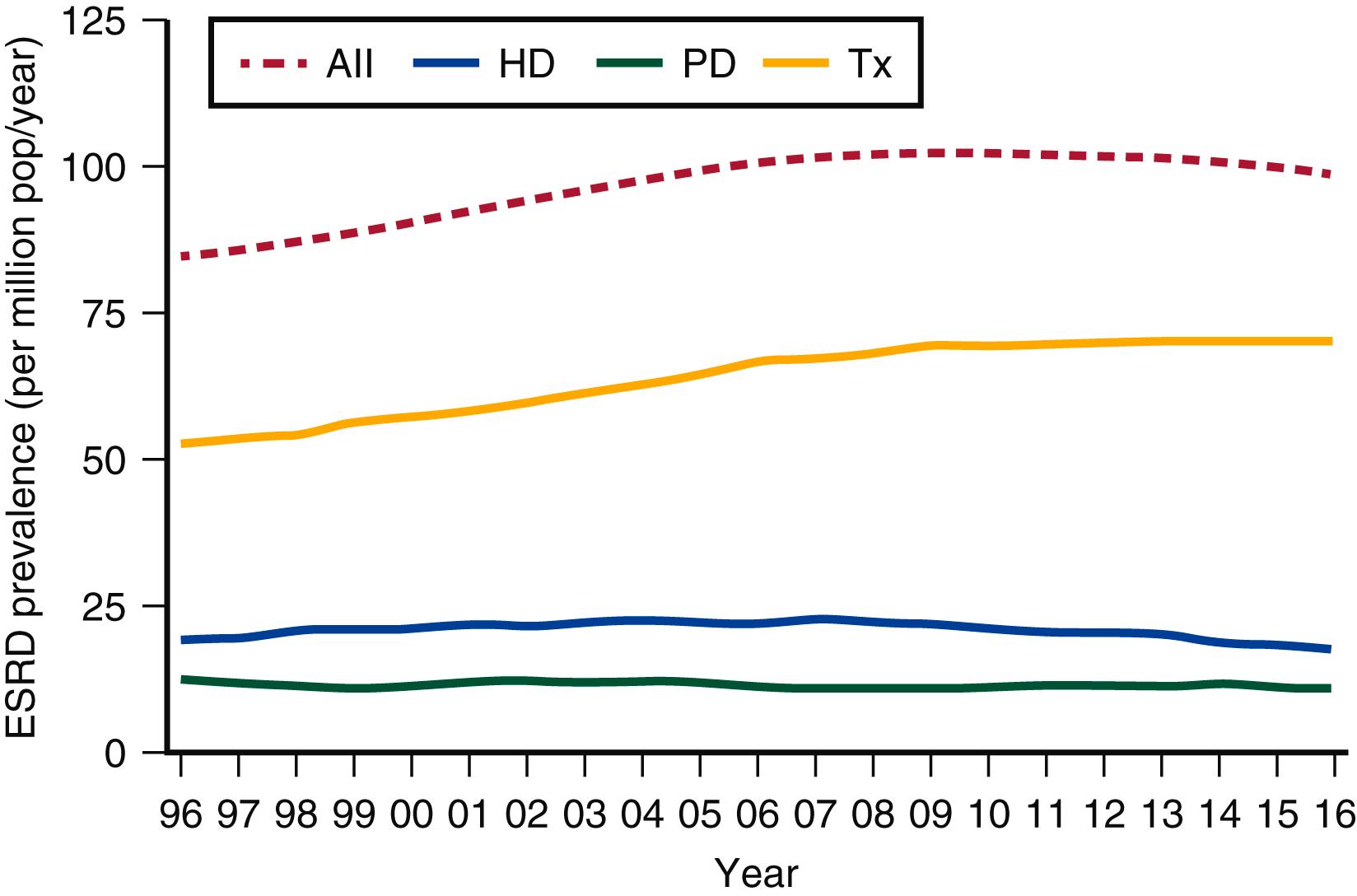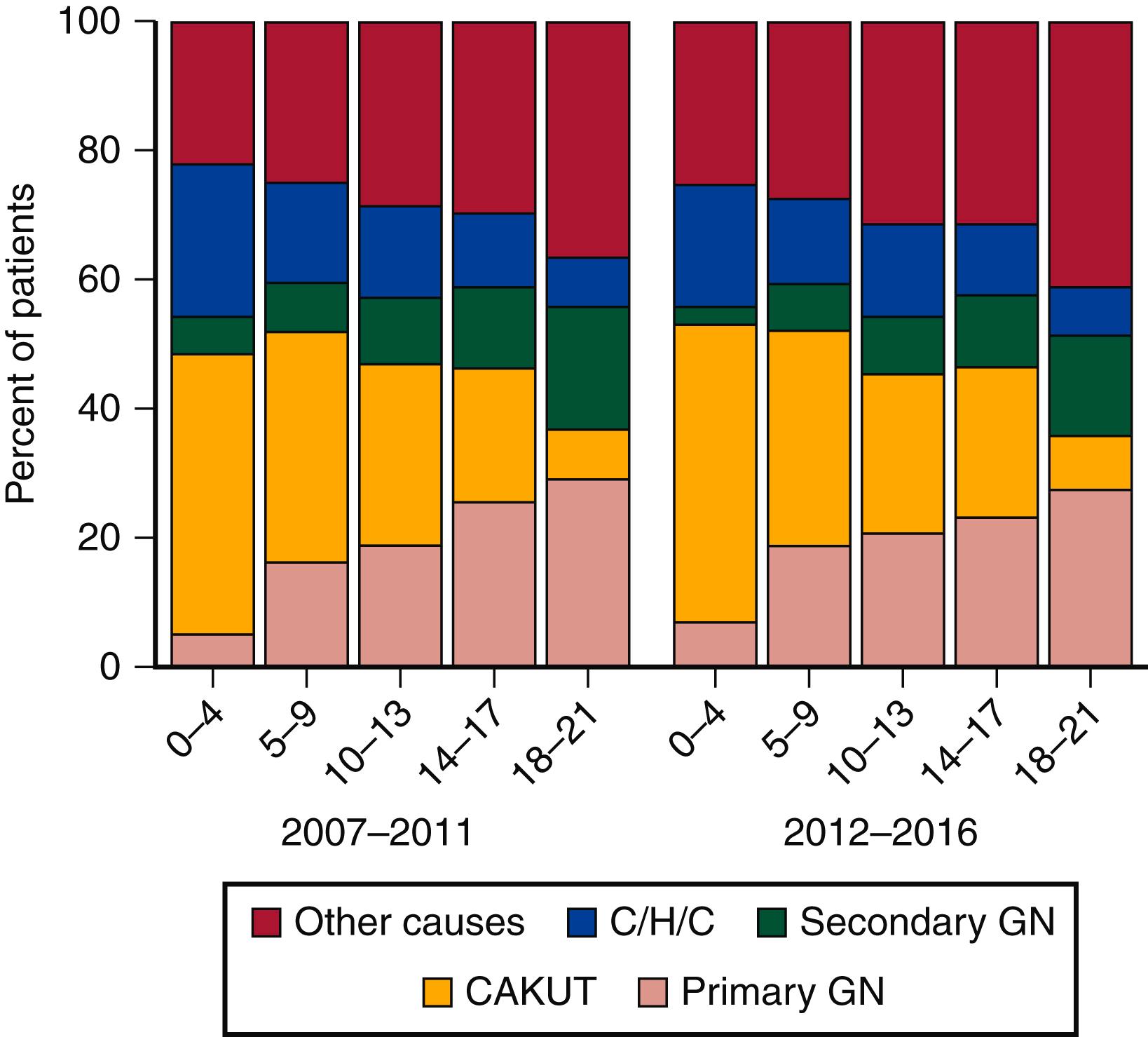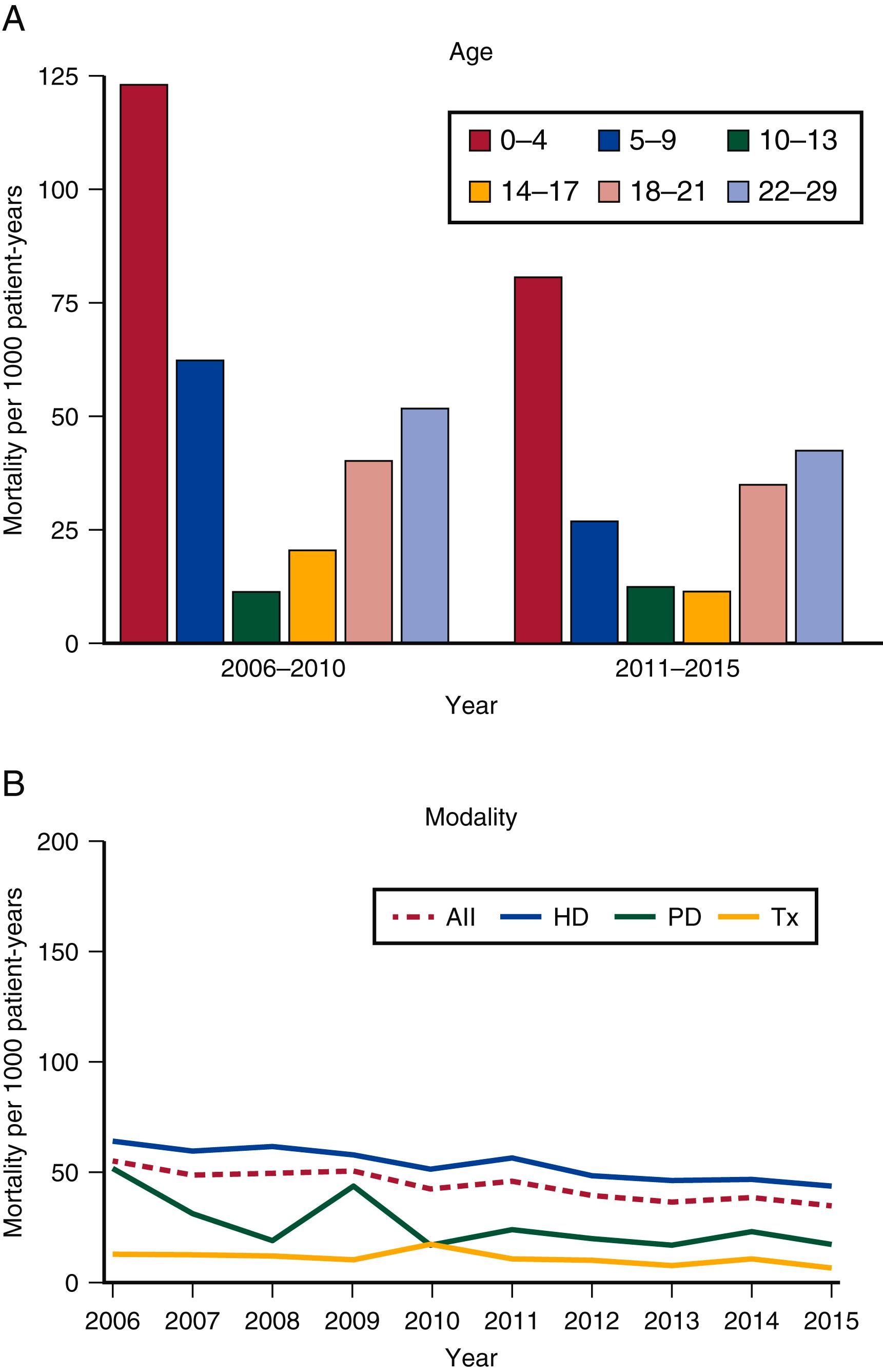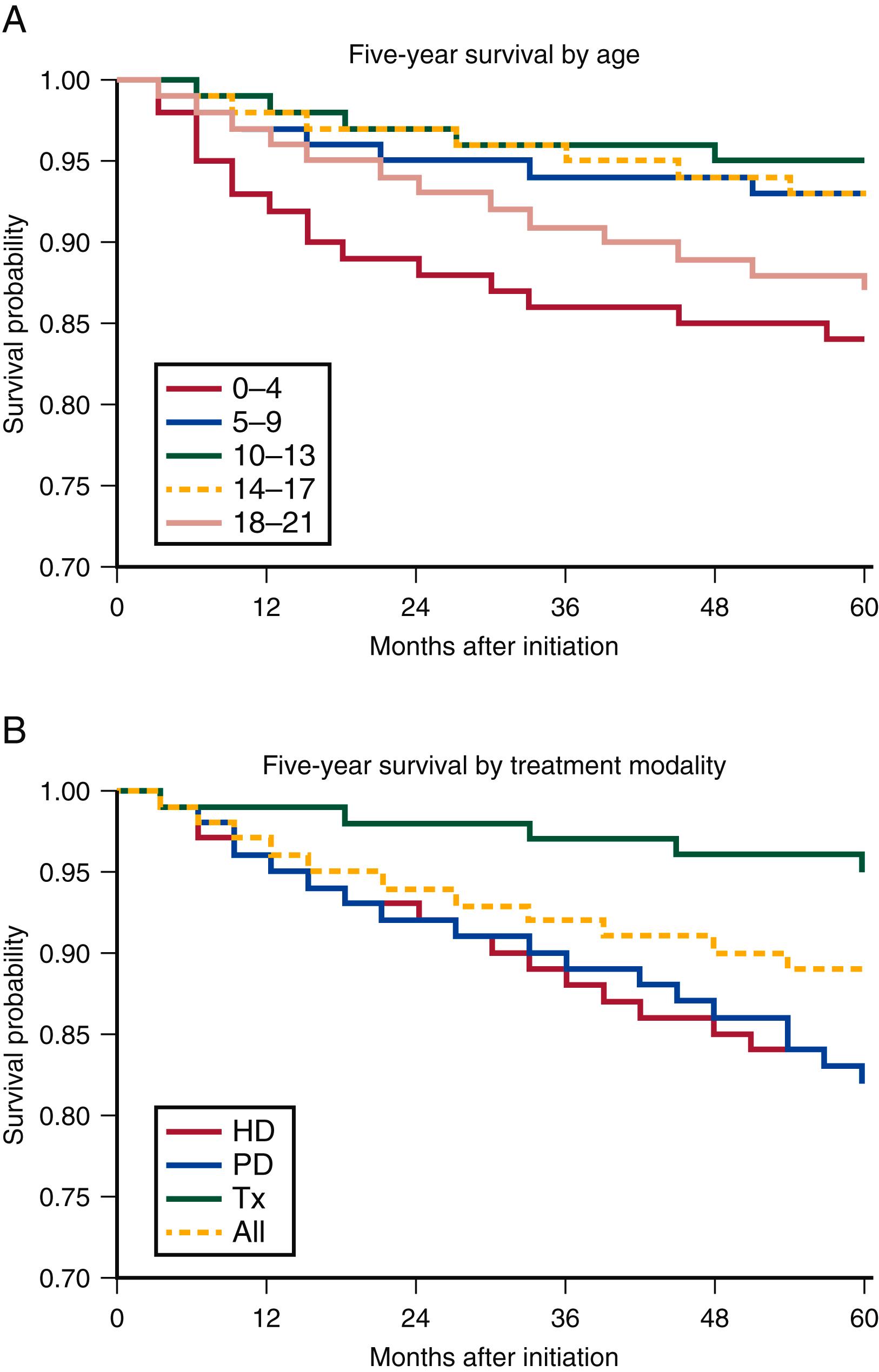Physical Address
304 North Cardinal St.
Dorchester Center, MA 02124
Pediatric end-stage renal disease (ESRD) is a challenge for caregivers, nephrologists, and surgeons. The number of children and adolescents beginning ESRD care is steadily decreasing from a high of 17.5 per million in 2004 to 13.8 per million in 2016, representing a decrease of 21.1%. Despite the decreasing number of pediatric patients with ESRD, there is still a large burden of healthcare costs, accounting for $194,059,769 Medicare dollars in 2016. Although 25.1% of pediatric patients initiating treatment for ESRD do so with index transplantation and 18.3% initiate with peritoneal dialysis, a large majority of patients (51.2%) utilize hemodialysis (HD) as their first modality of renal replacement therapy. Currently, the National Kidney Foundation’s (NKF) Kidney Disease Outcomes Quality Initiative (K-DOQI) guidelines recommend placing permanent HD access in all patients aged 0 to 19 who are greater than 20 kg and are not expected to receive a kidney transplant within 1 year. Thus, patients expected to be on dialysis more than 1 year that meet the age and size criteria should receive a permanent arteriovenous fistula (AVF). Over 50% of pediatric patients who initiate ESRD treatment with HD meet these criteria; however, the large majority of these suitable patients commence HD treatment via central venous catheters (CVCs).
The Fistula First Breakthrough Initiative (FFBI) was established in 2003 to improve the rates of arteriovenous fistula placement for HD. Combined with the FFBI, the K-DOQI practice guidelines set a goal of 40% AVF placement for first time access patients, and this goal was exceeded by 2011 with 60% fistula use. However, the FFBI does not specifically address the low rates of fistulas in the pediatric population. To combat this problem, the International Pediatric Fistula First Initiative (IPFFI) was established in 2005 with the aim of addressing the lack of AVF use in the pediatric population. The IPFFI was a collaborative effort with the Midwest Pediatric Nephrology Consortium, whose aim was to increase awareness among pediatric providers (nephrologists, surgeons, and dialysis staff) that AVF is the preferred access method for long-term HD in pediatric patients. The initiative has influenced practice in the United States and evidence supporting fistula first placement in the pediatric population is emerging with evidence of reduced blood stream infections secondary to increased fistula placements. ,
The incidence of ESRD in the pediatric population appears to have peaked in 2003 and has since then been steadily decreasing, although compared with the early 1980s and 1990s, the incidence curve has largely plateaued. In 2016, the incidence of ESRD in patients aged 0 to 21 years old was 1388, slightly decreased from 1619 in the year 2010. In comparison, the incidence in adults 22 and older was 123,287 patients the same year. The cumulative prevalence of ESRD in pediatric patients as of December 31, 2016 was 9721 children from 10,136 in 2010. Since its initiation of data collection in 1992, the North American Pediatric Renal Trials and Collaborative Studies (NAPRTCS) reports no significant change in the pattern of incidence of ESRD in the pediatric population. When looking specifically at certain age groups, race, or gender, these rates are anticipated to remain stable.
The United States Renal Data System (USRDS) reports hemodialysis as the most common index treatment for patients initiating care for ESRD; in 2016, 51.2% of pediatric patients initiated care with HD. Twenty-two percent had preemptive transplantation, and 26% started with peritoneal dialysis (PD). Compared to adults, where index transplantations are rare, there is a wider distribution of index treatment modalities in the pediatric population. The index treatment for adults in 2013 was HD in 88.2%, peritoneal dialysis in 9%, and index transplantation in only 2.6% of patients. Additionally, the pediatric population has shown a trend towards higher rates of transplantation after initiating any HD treatment modality. As many as 49% of children with ESRD underwent kidney transplantation within the first 2 years of starting ESRD care from 2014 to 2016; this is a higher figure than the 2009–2013 cumulative data showing 37%. Cumulatively, there were 9619 children and adolescents under the age of 22 with ESRD as of December 31, 2016. Despite HD being the most common form of initial treatment for ESRD, the most common prevalent ESRD modality is kidney transplant (6927 or 72%), followed by HD (1651, 17.2%), and PD (1019, 10.6%) ( Fig. 189.1 ).

In contrast to the adult population where the predominant etiology of ESRD is diabetes and hypertension, ESRD in the pediatric and adolescent population is caused by congenital and acquired disorders. Primary glomerular disease was the leading cause of ESRD in children during 2012–2016 (22.3%), followed by congenital anomalies of the kidney/urinary tract (CAKUT) 21.9%, cystic/hereditary/congenital disorders (11.7%), and secondary glomerular disease/vasculitis (10.7%) ( Fig. 189.2 ).

The most common causes of ESRD include focal glomerular sclerosis (11.5%), renal hypoplasia/dysplasia (10.4%), congenital obstructive uropathies (9.3%), lupus nephritis (5.6%), and unspecified renal failure (7.0%). In African American patients, there is a significantly higher percentage of children with certain nephropathies related to systemic diseases. For example, African American children make up 95% of all children affected with sickle cell nephropathy. In addition, AIDS nephropathy patients in the current reporting period are 97% African American, which is an increase from 91% in previous reporting years. Among those affected by lupus nephropathy, 53% are African American.
ESRD in children, as it does in the adults, confers an increased morbidity and mortality on those affected compared to the general population. However, decreasing overall mortality rates in the pediatric population are being seen. The 2011 to 2015 one-year adjusted all-cause mortality rate was 39 per 1000 patient-years, a 20.4% decrease from 2006–2010 data of 49 per 1000 patient-years ( Fig. 189.3A ). Additionally, there was a 39.9% improvement in the one-year mortality in the age <2 years group. Adjusted one-year all-cause mortality rates by modality showed decreases of 16.9% among HD patients, 35.5% among PD patients, and 30.8% among transplant patients when comparing the 2006–2010 data to the 2011–2015 period ( Fig. 189.3B ).

Although there was overall improvement in one-year all-cause mortality from 2011–2015, there was still a difference in mortality by ESRD modality. HD- and PD-associated mortality rates were 5.4 and 2.2 times higher than for transplant patients ( Table 189.1 ), respectively, highlighting the importance of transplantation in the pediatric population. Overall, the expected remaining lifetime in years of patients by initial ESRD modality shows that patients receiving kidney transplantation as their primary treatment modality have the longest life expectancy.
| Age group | Dialysis patients | Transplant patients | General population |
|---|---|---|---|
| 0–4 | 22.0 | 57.7 | 77.0 |
| 5–9 | 22.8 | 56.2 | 72.1 |
| 10–13 | 23.3 | 52.1 | 67.6 |
| 14–17 | 20.6 | 48.9 | 63.7 |
| 18–21 | 17.6 | 45.6 | 59.8 |
| 22–29 | 15.7 | 42.3 | 54.1 |
The combined 5-year survival for pediatric ESRD patients evaluated from 2008 to 2012 was 89%, with the youngest age group having the lowest survival. The 5-year survival percentages were 84%, 93%, 95%, 93%, and 87% for children aged 0 to 4 years, 5 to 9 years, 10 to 13 years, 14 to 17 years, and 18 to 21 years, respectively ( Fig. 189.4A ). As expected, the 5-year survival is best for those who have undergone transplantation (95%), followed by peritoneal dialysis and HD, both with a 5-year survival of 82% ( Fig. 189.4B ). The causes of mortality in pediatric patients are primarily cardiopulmonary issues and infections. Cardiopulmonary complications are responsible for 21% of all pediatric ESRD deaths, followed by infections of which bacterial infections cause 11.1% of deaths.

Rates of hospitalization are used as a surrogate for morbidity and a direct indicator of complications. Pediatric ESRD patients average 2005 admissions per 1000 patient-years; the most common causes again are cardiopulmonary issues, resulting in 374 admissions per 1000 patient-years, and infectious complications resulting in 606 admissions per 1000 patient-years. Broken down into hospital admission by modality of treatment, patients who have undergone transplantation have the lowest admission rates at 276 per 1000 patient-years, followed by those on HD at 556 per 1000 patient-years and by those on peritoneal dialysis at 779 hospitalizations per 1000 patient-years (see Fig. 189.4 ).
Become a Clinical Tree membership for Full access and enjoy Unlimited articles
If you are a member. Log in here